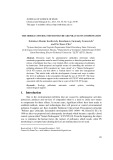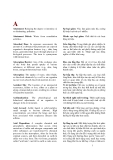
Polluting substances
-
This article deals with the development of means and ways to reduce the level of pollutants in the atmosphere through the use of CCS NT. The basic approach is information support in the construction of CCS NT while problems are associated with the automation aspect that is a part of the CCS NT design.
 6p
6p  tamynhan8
tamynhan8
 04-11-2020
04-11-2020
 10
10
 2
2
 Download
Download
-
A Abatement: Reducing the degree or intensity of, or eliminating, pollution. Abatement Debris: Waste from remediation activities. Absorbed Dose: In exposure assessment, the amount of a substance that penetrates an exposed organism's absorption barriers (e.g.,, skin, lung tissue, gastrointestinal tract) through physical or biological processes. The term is synonymous with internal dose. Absorption Barrier: Any of the exchange sites of the body that permit uptake of various substances at different rates (e.g., skin, lung tissue, and gastrointestinal-tract wall).
 217p
217p  holigon10
holigon10
 15-06-2012
15-06-2012
 472
472
 150
150
 Download
Download
-
Harrison's Internal Medicine Chapter 30. Disorders of Smell, Taste, and Hearing Smell The sense of smell determines the flavor and palatability of food and drink and serves, along with the trigeminal system, as a monitor of inhaled chemicals, including dangerous substances such as natural gas, smoke, and air pollutants. Olfactory dysfunction affects ~1% of people under age 60 and more than half of the population beyond this age. Definitions Smell is the perception of odor by the nose. Taste is the perception of salty, sweet, sour, or bitter by the tongue.
 6p
6p  ongxaemnumber1
ongxaemnumber1
 29-11-2010
29-11-2010
 91
91
 7
7
 Download
Download
-
Introduction: Diazine and triazine herbicides are being widely used in the world. These herbicides inhibit the electron-transport system in the higher plants and thus suppress the photosynthesis, resulting in the herbicidal action. These compounds are also important as pollutants for crops, soil and groundwater [1, 2]. The attention is usually directed toward chronic toxicities of the herbicides [3].
 8p
8p  bigbaby87
bigbaby87
 01-09-2010
01-09-2010
 79
79
 8
8
 Download
Download
CHỦ ĐỀ BẠN MUỐN TÌM
















